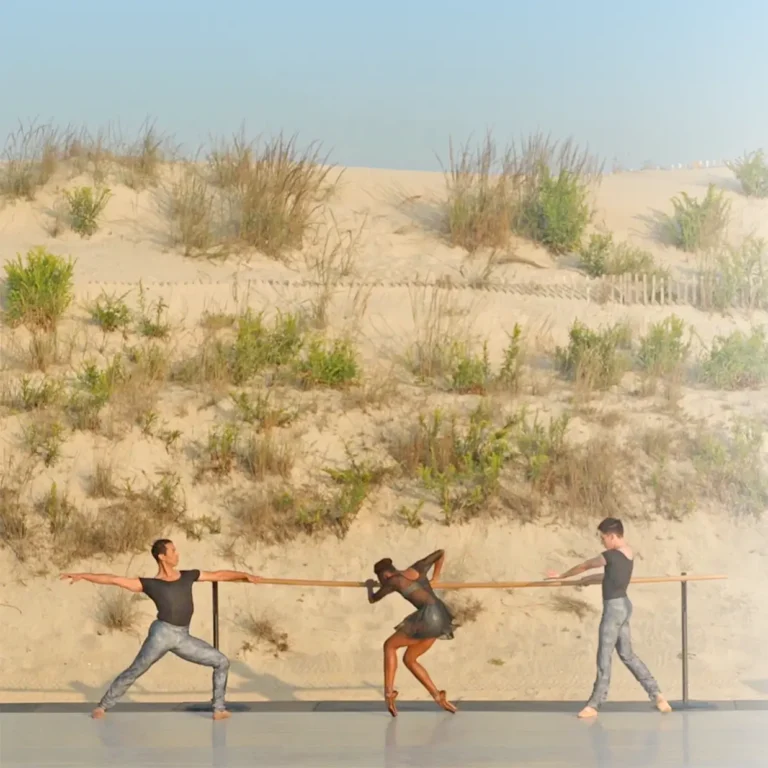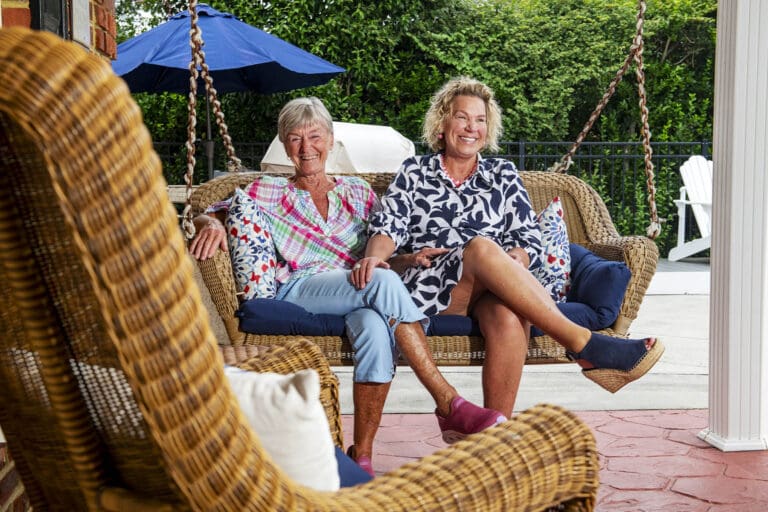Ruth E. Carter, Oscar-winning costume designer for films like Black Panther and Amistad, reflects on her Coastal Virginia roots as part of the opening of a retrospective exhibit at Jamestown Settlement
In the middle of the room: the silhouette of a queen. Sparkling metallic tulle over a bodacious cream gown inlaid with geometric motifs.
On the shoulders, a gleaming hollow mount detailed with thousands of winding cutouts that fashion themselves into swirling pools or abstract foliage. An equally intricate crown in the shape of an Isicholo, an example of traditional South African marriage headwear, completes the ensemble.
This breathtaking garment worn by actress Angela Bassett in Marvel’s record-shattering film Black Panther is just one of more than 60 masterfully designed costumes currently on display at Jamestown Settlement. Opened on May, 11, 2024, Afrofuturism in Costume Design chronicles the filmography of two-time Academy-Award-winning costume designer Ruth E. Carter.
A graduate of Hampton University, Carter headed the wardrobe department for both Black Panther installments, Do the Right Thing (1989), Selma (2014), Malcolm X (1992), and a multitude of other projects steeped in the resilient history and future of the African diaspora.

The exhibition weaves through three darkened rooms on the Jamestown Settlement museum’s upper floor. Each film is showcased on its own raised platform, bathed in cinematic lighting and accompanied by plaques noting the origin of each costume, the actor who wore it, the materials used, and any specialized craftsmanship that went into its making.
While some are student recreations made under Carter’s supervision, most of the pieces come from her personal collection and are one of the duplicates actually worn by the actors during filming.
Carter recently sat down with Jamestown-Yorktown Executive Director Christy S. Coleman, a fellow HU alumna, as part of Jamestown’s 2024 Director’s Series, which features interviews with distinguished industry leaders throughout the year.
Their hour-long conversation covered notable aspects of Carter’s career, her upbringing and time at her alma mater. Indeed, any mention of Hampton University, from which Carter holds a bachelor’s degree and honorary doctorate, drew excited chatter from an alumni-filled crowd.
Carter, though born and raised in Massachusetts, has family ties to Virginia going back generations and noted that Hampton was her first choice for higher education. It was during her time studying here, she divulged, that the fateful origins of her illustrious career took root.
Having just switched her major from special education to theater, Carter was beginning to appear regularly in the school’s plays. But it was a production in which she didn’t score a role, Moliere’s The Would-be Gentleman, that led her to discover the magic of the relatively neglected but fully outfitted Hampton University costume shop.

“That became my learning lab,” she remembered. “That was a place I found a home in…I knew that this world that I was embarking on was something that I could focus on and it just stuck like glue.”
Carter’s unique ability to extract vibrant character and humanity from written and oral histories as showcased by her Oscar-nominated work in projects like Amistad (1997) or Malcom X (1992) was also sharpened by her extracurricular experience working as a character interpreter for Colonial Williamsburg.
She recalled the confidence that her in-depth research of the free and enslaved figures she played gave her in taking creative liberties–recounting one particular instance where she decided to go barefoot in lieu of the shoes that had been provided to her: “I had a way of changing what they gave me into something else,” she said, a practice she carried with her all the way to Hollywood.
Director Spike Lee was one of Carter’s earliest and most frequent collaborators. On his iconic Do the Right Thing, her team had to work within the bounds of a Nike product placement deal that practically funded the production. To enrich the visual themes of the project as a protest film, Carter ensured that the costumes were highly customized with special emphasis on Africanist aesthetics to reflect Brooklyn’s status as a richly saturated melting pot about to bubble over.
Widely considered the magnum opus of the collection is her work on Black Panther (2018), her first foray into the world of superheroes. Not only did her designs garner Marvel studios their first Academy acknowledgement, they would also make her the first Black person to win the Oscar for costume design.
Later she’d make history again as the first costume designer to win the Oscar for both a film and its sequel (Black Panther: Wakanda Forever, 2022) and the first Black woman to win multiple Oscars in the same category.
The costumes aid the film’s vibrant imagining of what Northeast African cultural and natural wealth might have generated if they’d never been exploited by outside forces, and this give Black Panther a distinct, fantastical visual language, which helped make it a cultural phenomenon.
The Marvel Cinematic Universe brought with it a unique set of challenges while filming. Since most of the film’s climactic scenes were shot in studios entirely surrounded by bluescreen, Carter’s costumes were often the only tangible link the actors had into the world of their characters: in this case, Wakanda.

The dynamic works of art on display at Jamestown represent some of Carter’s most stunningly detailed appliances of Afrofuturism as a design philosophy. In addition to viewing the costumes, visitors are invited to learn things like which tribe’s traditional dress served as inspiration for certain pieces or how some of them were physically realized utilizing cutting-edge costume technology such as 3D printing, magnets, resin molding and more.
“I think after you have amassed the kind of filmography that I have, it creates its own momentum,” Carter says of the public response to the exhibition. “I’m approached by different museums that have a community of people that are interested in the subject matter. Whether you’re a student of costume design or you’re a film enthusiast or you just love to study Afrofuture, it really does reach the community.”
On display until December 1, 2024, Ruth E. Carter: Afrofuturism in Costume Design offers a remarkable glimpse into the creative process of a modern visionary who’s taken her creative experience in Coastal Virginia with her all the way to the top.
Learn more at jyfmuseums.org.
Photos by Colin Gray and SCAD FASH Museum, Courtesy of the Jamestown-Yorktown Foundation




























